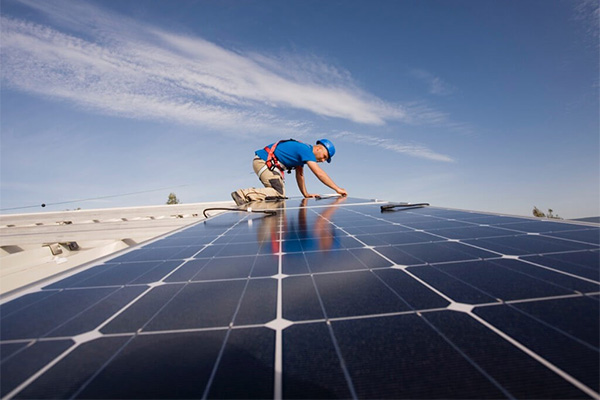- Utility-scale solar and wind power are projected to constitute a quarter of U.S.'s electricity generation capacity in three years, according to a review by the SUN DAY Campaign of FERC data.
- By 2026, renewable energy sources, including a significant increase in solar and wind, could account for over one-third of installed capacity.
- FERC predicts a decrease in fossil fuels' and nuclear power's share of total capacity by May 2026, despite recent additions in natural gas capacity.
Washington DC – Based upon a review by the SUN DAY Campaign of data newly released by the Federal Energy Regulatory Commission (FERC), utility-scale solar and wind appear to be on track to provide a quarter of the nation’s installed electrical generating capacity within three years.
In its latest monthly “Energy Infrastructure Update” report (with data through May 31, 2023) FERC notes that wind is now 11.63% of total installed generating capacity while utility-scale solar provides another 6.86%.
However, over the next three years (i.e., by May 2026), FERC anticipates “high probability additions” of solar to provide another 80,087-MW while wind is expected to expand by 19,816-MW. Assuming that materializes, in three years, wind would account for 12.43% of installed capacity while utility-scale solar would provide another 12.41%. And that does not include generating capacity provided by small-scale, distributed (e.g., rooftop) solar.
Factoring in FERC’s forecasts for hydropower, geothermal, and biomass, renewable energy sources would expand from today’s 28.01% of installed generating capacity to 33.85% – i.e., over a third – by May 2026.
Solar and wind’s share of U.S. generating capacity could actually be substantially higher if new capacity exceeds FERC’s forecast of “high probability additions.” The agency indicates that the amount of solar and wind in the three-year pipeline could be nearly three times higher than the total of the “high probability additions”. Solar could add 214,022-MW while wind could grow by 66,065-MW.
Moreover, recent history suggests that solar and wind growth is outpacing FERC’s predictions for “high probability additions.” A year ago, FERC reported “high-probability additions” for wind and solar within three years of 18,711-MW and 62,835-MW respectively.
FERC’s latest 3-year forecast for those sources is now 22.5% higher.
Signs of that prospective growth may already be evident.
For the first five months of 2023, wind and solar accounted for more than half of the new capacity additions this year – 51.07% – comprised of 4,460-MW of solar and 2.645-MW of wind. New capacity provided by hydropower (254-MW), geothermal (37-MW), and biomass (29-MW) brought renewables’ combined share of new capacity up to 53.38%. The balance (other than 2-MW from oil) was provided by natural gas.
Notwithstanding the recent natural gas additions, FERC foresees a net decline of 1,564-MW in natural gas generating capacity over the next three years in addition to a drop of 19,966-MW in coal capacity. Oil and nuclear capacity are also foreseen falling – by 569-MW and 123-MW respectively.
Should just FERC’s “high probability” forecasts materialize, by May 2026, installed U.S. fossil fuels’ share of total capacity will drop over the next three years: natural gas – 41.67% (from 44.37% in May 2023), coal – 14.05% (from 16.49%), and oil – 2.68% (from 2.89%). Nuclear power will also fall from 8.07% today to 7.60% in May 2026.
“Wind and solar are now poised to each provide an eighth of the nation’s installed generating capacity within three years while all renewables combined will account for over a third,” noted the SUN DAY Campaign’s executive director Ken Bossong. “But in light of renewable energy growth rates of recent years, those numbers may very well prove to be an under-estimate.”













Comments